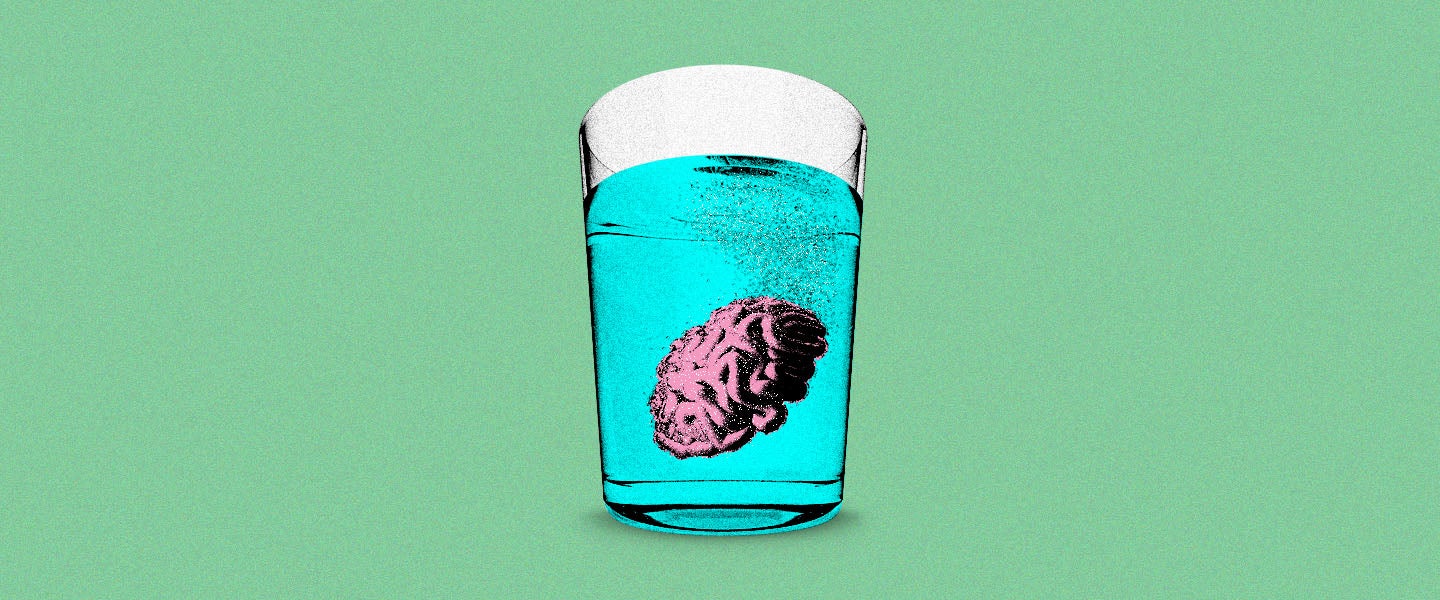Once an addict, always an addict. That’s essentially what Dr. Charlie Seltzer, a Philadelphia-based weight-loss physician (and yes, that is his real name), tells me when I ask him why I’ll drink like, five seltzers a day when I’m craving sugar really bad. Hell, I gave up soda four years ago, and I still get cravings for it.
Seltzer explains, “In the real world, people who are addicts are always going to be addicts, and there’s not anything really you can do about that. They’re craving that dopamine release in their brain, and once you lose that mechanism that you obtained it from — like sugar, drugs or alcohol — people naturally search for something else to fill that void.” This is why many people become fitness nuts when kicking their addiction, because they’re trying to chase that dopamine high.
While I probably would have been better served by running marathons, my lazy ass chose to substitute my cravings for Pepsi with seltzer, and it’s proven to be pretty effective (at least at satisfying the cravings). Seltzer explains that sparkling water or seltzer or club soda — they’re all the same to me — is especially good at cutting soda cravings because the brain associates the bubbles with the carbonation from the soda. While it hasn’t been proven that seltzer gives that same dopamine release, Seltzer explains that there’s an association between the two, kind of like a Pavlovian response, which may also lead to a dopamine release. Additionally, because of the bubbles, seltzer fills your stomach and may give the illusion that you’re full, which helps with hunger cravings as well.
While that explains why seltzer may help with curbing sugar cravings, especially from soda, what about a much more serious addiction like alcoholism? After all, many alcoholics find club soda helpful — if you’re a fan of the show Cheers, you’ll often see Ted Danson’s Sam Malone carrying a bottle of club soda with him, which Danson used as a prop, but also to represent the character’s history of alcoholism. For this, Seltzer believes that the effect is less direct than it is with sugar and soda. “It’s not like someone who is addicted to alcohol would be able to substitute their addiction with seltzer,” he says. But what people often turn to when going sober is sugar, and seltzer may help curb the sugar craving and fill your stomach, meaning that, in a roundabout way, it can help with alcohol. It may be even more effective if one’s drink of choice during their addiction more closely resembled the seltzer — like say, a Jack and Club or a Gin and Tonic — in those cases, it’s once again a similar association in your brain the same way it would be for soda.
There’s also something that’s just innately satisfying about seltzer, and part of that may be due to something called “benign masochism.” As Paul Wise, from the Monell Chemical Sciences Center, explains, benign masochism is something that initially seems a bit painful or threatening, but that as humans we know is safe and thus crave it. It’s the same reason people like scary movies and roller coasters, and as Wise points out, why people are the only animals on the planet that like spicy chili peppers. This sense of danger or pain gets your heart rate up a little and causes a bit of excitement, so for that reason, human beings — and only human beings — may crave cold, bubbly drinks.
Wise further explains that there’s a slight degree of pain or discomfort that comes with seltzer that we find more exciting than boring old water. “Carbon dioxide is dissolved in these drinks and then the drink diffuses into the tissue of the mouth, especially the tongue. Then the enzymes in the tissue catalyze the carbon dioxide and break it down into carbonic acid, and it’s the acid in the tissue that stimulates the pain receptors in the brain.” This is even further enhanced when the seltzer is cold, as Wise says the cold temperature further enhances the bite of sparkling water.
Like everything else in the world, there are always drawbacks. As Anywhere Gym nutritionist Sean Salazar explains, “Due to the acidity, it can cause stomach or GI issues, so it’s not great for anybody with IBS.” It may also affect the enamel on your teeth — or it may not. None of these things are life-threatening, Salazar says, but it’s worth being aware of. And none of them are concerning enough to me that I’ll give up guzzling can after can of that crisp, cold, crave-curbing and slightly painful nectar that’s helped me and so many others.

